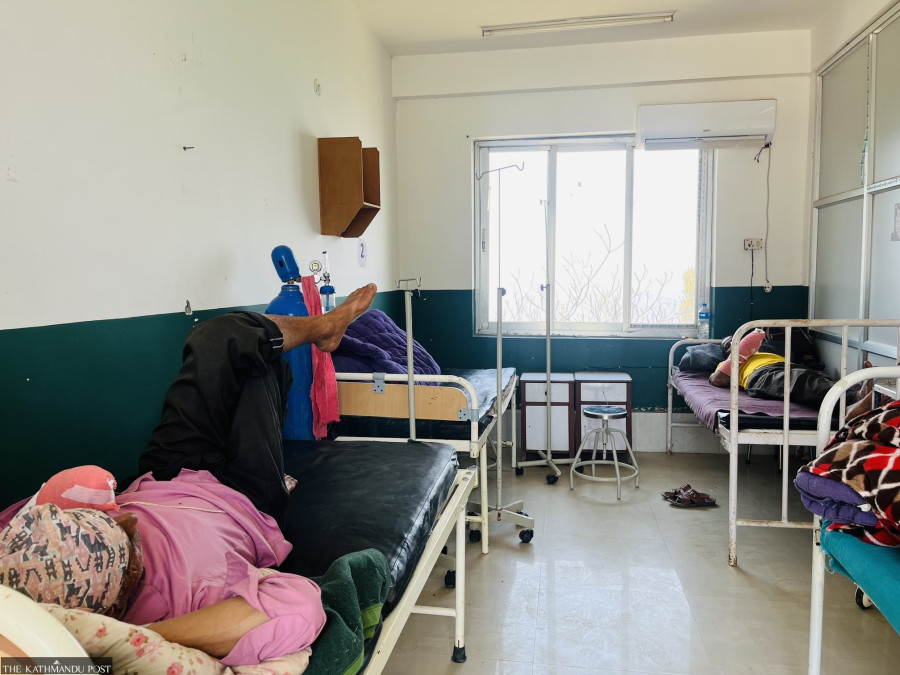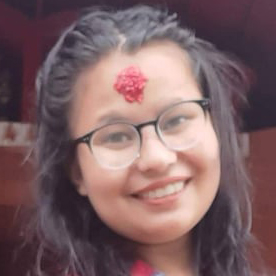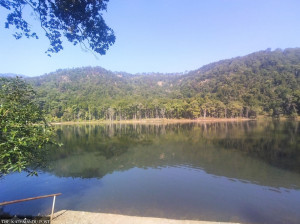Sudurpaschim Province
Lack of orthopaedic doctors at Baitadi district hospital costs patients dearly
The absence has deprived people from the hilly district of timely treatment, leaving many disabled.
Tripti Shahi
Eleven-year-old Urmila Luhar suffered burns on the three fingers of her right hand when she was three months old. Her mother, Laxmi Luhar, says she rushed Urmila to the Baitadi District Hospital immediately. The hospital treated Urmila for her burns and advised Laxmi to take her daughter to a better-facilitated hospital outside the district to seek treatment for bone damage caused by the burns. But the family of meagre means from Dashrath Chand Municipality-11 did not have the financial resources to take Urmila elsewhere for treatment.
The district hospital did not have an orthopaedic surgeon back then and it still does not have one.
For 11 years, Urmila, a sixth-grader, lived with distorted fingers which impeded her hand movement and led to challenges in her everyday life. Her fingers stopped working completely leading to the limited movement of her hand.
“For more than a decade, I have been worried about my daughter’s well-being and her prospects in life given her disability,” said Laxmi.
After a decade of suffering, Urmila finally received the treatment she needed from the Orthopaedic Treatment Camp organised by Nepal Orthopaedic Hospital in Jorpati, Kathmandu and conducted at the district hospital. The free health camp was conducted by a team of 20 doctors from April 2 to April 6.
Urmila underwent surgery on the first day of the camp and gained partial movement of her fingers in the next two weeks. She is now on her path to full recovery, says her mother Laxmi.
“If Urmila had received the same treatment back then, she wouldn’t have had to suffer so much,” said Laxmi. “Her treatment was delayed by more than 10 years for a lack of orthopaedic doctors at the district hospital.”
The absence of an orthopaedic doctor at the district hospital has deprived the rural population of the hill district of timely treatment. Patients seeking treatment for bone injuries have to wait for health camps like the one organised in April to receive treatment.
Baitadi is a hilly region with difficult, accident-prone landscape features such as high cliffs and deep gorges. “People in the villages have to negotiate difficult terrain to get from one place to another, so people falling over and breaking bones is a common occurrence here,” said Hira Nath, a 65-year-old man from Ward No 4 of Dashrath Chand municipality. “But the lack of doctors who can treat such injuries at the district hospital leaves the injured with disabilities.”
Manju Sarki, a 23-year-old woman from Pancheswor Rural Municipality-4, fell from a tree two years ago when she was out to collect berries. She broke her leg and since she could not afford to go out of the district to seek treatment, she only sought preliminary treatment at the local health post.
“If there was a doctor in the time of need then people wouldn’t have to wait for health camps to be organised to be treated,” said Nath.
Suman Mahara, administrator of the Baitadi district hospital, says that the hospital has been requesting the concerned authorities for the post of orthopaedics but their request has not yet been heeded. “The hospital needs not only orthopaedics but also doctors from other fields for us to be able to provide extensive service to the people,” said Mahara. “The doctors we have right now with us are also working on contract basis. There is always a shortage of doctors at the hospital.”
There are currently seven doctors and 51 health workers at the 15-bed capacity hospital.
Like Urmila, several other patients with orthopaedic ailments received treatment at the free health camp.
Rudi Bista, a 63-year-old man from Surnaya Rural Municipality-3 suffering from a severe infection on his hands, had to wait for a year before he could receive treatment at the health camp.
“I don’t know what would have happened if my hand was left untreated,” said Bista. “The infection had deepened and affected my finger bones too. The pain was nerve-racking.”
According to Mahara, more than 1,200 patients were treated at the health camp in April, and more than 80 surgeries were performed.
Dr Yuvraj Kharel, director of Nepal Orthopaedic Hospital, said that the camp was organised in Baitadi for the treatment of osteoarthritis, the most common form of arthritis in patients in hilly regions. “But we received more patients seeking orthopaedic treatment for injuries caused to the bones by falls and burns,” said Kharel. “Some patients have been suffering for a long time for a lack of treatment while others have to live with permanent disabilities due to lack of timely treatment.”
Kharel’s team has conducted similar camps in Darchula, Bajura, Dadeldhura, Bajhang and Doti, he said.




 8.12°C Kathmandu
8.12°C Kathmandu











%20(1).jpg&w=300&height=200)

